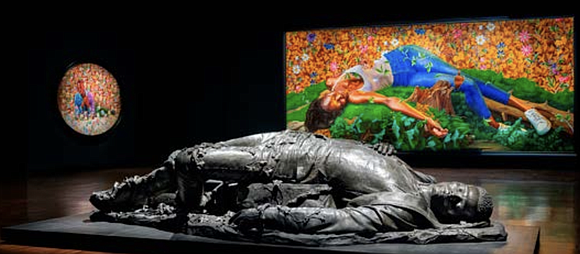Kehinde Wiley: An Archaeology of Silence
Kathleen Coleman | 11/16/2023, 1:40 p.m.
Kehinde Wiley: An Archaeology of Silence showcases Kehinde Wiley’s new, monumental body of work created against the backdrop of the COVID-19 pandemic, the murder of George Floyd, and the global rise of the Black Lives Matter movement.
The exhibition premiered earlier this year at the Fine Arts Museums of San Francisco, and the MFAH is the first stop on the tour.
Expanding upon his “Down” series from 2008, the American artist (born 1977) meditates on the deaths of young Black people slain around the world. The works in An Archaeology of Silence stand as elegies and monuments, underscoring the fraught terms in which Black people are rendered visible, especially at the hands of systemic violence. “That is the archaeology I am unearth- ing: The specter of police violence and state control over the bodies of young Black and Brown people all over the world.” —Kehinde Wiley
The “Down” series features a group of large-scale portraits of young Black men inspired by Hans Holbein the Younger’s 16th-century painting The Dead Christ in the Tomb. For Wiley, Holbein’s painting triggered an ongoing investigation into the iconography of death and sacrifice in Western art across religious, mythological, and historical subjects.An Archaeology of Silence reconceptualizes this research into paintings and sculptures that confront the legacies of colonialism through the visual language of the fallen figure.
The resulting paintings of Black people struck down, wounded, resting, or dead, all referencing iconic historical paintings of heroes, martyrs, or saints, offer a haunting meditation on the violence against Black and Brown people through European art-historical references.








